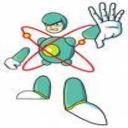Yahoo Answers is shutting down on May 4th, 2021 (Eastern Time) and beginning April 20th, 2021 (Eastern Time) the Yahoo Answers website will be in read-only mode. There will be no changes to other Yahoo properties or services, or your Yahoo account. You can find more information about the Yahoo Answers shutdown and how to download your data on this help page.
Trending News
Physics question dealing with terminal velocity? It's driving me nuts!?
Okay, so we have to complete a lab report on Air Resistance. The one question is completely stumping me, and I was wondering if you could help me out.
If one filter falls in time, t, how long would it take four filters to fall, assuming the filters are always moving at terminal velocity?
It would mean a lot if you could help! I can't figure it out to save my life.
3 Answers
- kuiperbelt2003Lv 79 years agoFavorite Answer
if I understand your question correctly, you are being asked to figure out what the terminal velocity will be for four filters if you know the terminal velocity of 1 filter
the terminal velocity of an object is given by
Vterminal = Sqrt[2 m g/(rho A C)]
where m is the mass, g is the accel due to gravity, rho is the density of the fluid through which the object moves (here it is air), A is the area of the falling object, and C is a coefficient describing the nature of the friction between the air and the falling object
for your situation, only the mass changes from one filter's mass to four times that amount, the other variables are all the same, so
if you quadruple the mass, the terminal velocity increases by a factor of 4^(1/2) =2
if the terminal velocity is twice as great, then the time taken to fall the same distance is t/2
hope this helps and is on point
- electron1Lv 79 years ago
If one filter falls in time, t, how long would it take four filters to fall, assuming the filters are always moving at terminal velocity?
http://en.wikipedia.org/wiki/Drag_(physics)
http://en.wikipedia.org/wiki/Terminal_velocity
The websites above has the information below.
Force of air resistance = ½ * ρ * v^2 * Cd * A
and
Terminal velocity = [(2 * m * g) ÷ (ρ * A * Cd)]^0.5
m = mass of the falling object,
g = acceleration due to gravity,
Cd = drag coefficient,
ρ = density of the fluid through which the object is falling, and
A = projected area of the object.
The force caused by air resistance is dependent on the surface area that the air is pushing on. If the 4 filters are stacked on top of each other, only the area of bottom filter will affect the air resistance. The only difference is the mass of the falling object.
Terminal velocity of 1 filter = [(2 * m * g) ÷ (ρ * A * Cd)]^0.5
Terminal velocity of 4 filters = [(2 * 4 * m * g) ÷ (ρ * A * Cd)]^0.5
The terminal velocity of 4 filters is 4 times the terminal velocity of 1 filter.
- Steve4PhysicsLv 79 years ago
At terminal velocity, air resistance (up) = weight (down) because there is no resultant force up/down.
Having 4 filters makes the weight 4 times bigger (but keeps the area presented to the air the same).
The air resistance is therefore 4 times bigger.
Since air resistance is proportional to speed-squared, the speed must double to make speed-squared 4 times bigger.
If the speed has doubled, the new time is t/2




